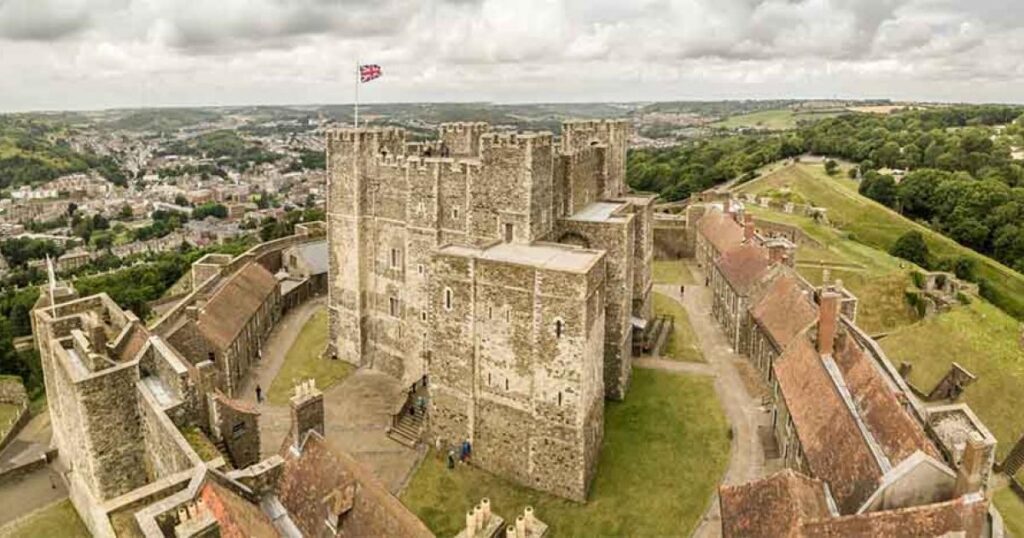Dover Castle: Key to England’s Defense
Dover Castle, perched atop the iconic White Cliffs of Dover, is a magnificent fortress that has stood as a sentinel over the English Channel for centuries. Known as the “Key to England,” this historic site offers visitors a fascinating glimpse into the past, with its rich history, stunning views, and intriguing tales of defense and survival. Whether you’re a history buff, a lover of architecture, or simply looking for a day out with breathtaking scenery, Dover Castle is a must-visit destination.
What to See at Dover Castle
Dover Castle is a sprawling complex with numerous attractions to explore. The Great Tower, built by Henry II in the 12th century, is the centerpiece of the castle. Visitors can climb to the top for panoramic views of the surrounding countryside and the English Channel. Inside, the tower has been meticulously restored to reflect its medieval grandeur, complete with period furnishings and interactive exhibits that bring history to life.
The Secret Wartime Tunnels are another highlight. These tunnels were used during World War II as a command center and hospital. Guided tours take you through the labyrinthine passages, offering insights into the strategic importance of Dover during the war. The tour is both educational and atmospheric, with sound effects and projections that recreate the wartime experience.
The castle grounds are also home to the Roman Lighthouse, one of the oldest in the world, and the Saxon Church of St. Mary in Castro. Both structures provide a fascinating look at the layers of history that have shaped Dover Castle over the centuries.
A Bit of History and Interesting Facts
Dover Castle has a long and storied history, dating back to the Iron Age. Its strategic location made it a vital defensive site throughout the ages. The Romans recognized its importance and built a lighthouse here, which still stands today. The castle as we know it began to take shape in the 11th century under William the Conqueror, and it was expanded and fortified by subsequent monarchs.
One of the most interesting periods in the castle’s history was during the Napoleonic Wars when it was transformed into a garrison town. The Secret Wartime Tunnels were later expanded during World War II, playing a crucial role in the Dunkirk evacuation.
An intriguing fact about Dover Castle is that it has never been taken by force, earning its reputation as the “Key to England.” Its formidable defenses and strategic location have made it a symbol of resilience and strength.
Getting There and Tips for First-Time Visitors
Dover Castle is easily accessible by various modes of transportation. If you’re traveling by train, Dover Priory Station is the nearest railway station, and from there, it’s a short taxi ride or a pleasant walk to the castle. For those driving, the castle is well-signposted from the A2 and A20, and there is ample parking available on-site.
First-time visitors should plan to spend at least half a day exploring the castle and its grounds. Wear comfortable shoes, as there is a lot of walking involved, and be prepared for the weather, as the site is exposed to the elements. The visitor center offers maps and information to help you make the most of your visit, and there are cafes and picnic areas for refreshments.
For a truly memorable experience, consider timing your visit to coincide with one of the castle’s special events or reenactments, which bring history to life with costumed characters and demonstrations.








